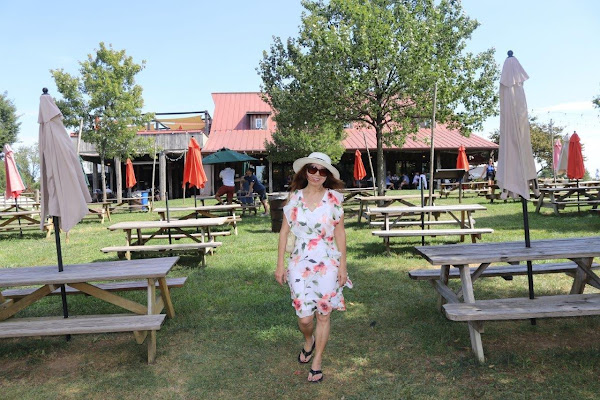Situated within the campus of The Catholic University of America in Washington, D.C., the Basilica of the National Shrine of the Immaculate Conception is a remarkable religious and architectural masterpiece. This grand Roman Catholic church ranks among the largest and most prominent in the United States. Visiting this splendid site is a sensory delight for the eyes, body, and mind, offering a captivating blend of aesthetics and spirituality.
Travel with me, let me take you to see, enjoy, explore and appreciate the beauty presented to you in my photos of nature, man made or other kind, in my back yard, near and far and around the world!
Tuesday, September 26, 2023
The Basilica of the National Shrine of the Immaculate Conception
Saturday, September 23, 2023
Glenstone Museum II
Glenstone is a private contemporary art museum located in Potomac, Maryland, USA. Founded by Emily Wei Rales and Mitchell Rales, it opened its doors to the public in 2006 but underwent significant expansion and renovation, culminating in a major reopening in 2018. The museum's mission is to integrate art, architecture, and landscape into a seamless and immersive experience for visitors.
One of Glenstone's unique features is its extensive outdoor sculpture garden, which showcases a wide range of contemporary sculptures in a beautiful natural setting. The museum's grounds cover approximately 230 acres, and they are carefully landscaped to create a harmonious environment for both art and nature.
Glenstone offers nearly 300 acres of landscape integrated with the architecture and art. The landscape includes paths, trails, streams, meadows, forests and outdoor sculptures throughout the grounds which showcases a wide range of contemporary sculptures in a beautiful natural setting. The museum's grounds are carefully landscaped to create a harmonious environment for both art and nature.
I have first visited this place in February, here are the photos taken from second visit in September when the grounds are decorated with colorful wildflowers and grasses; clouds hang higher in the blue sky! It was truly a special experience to enjoy art, architecture and landscape all in one place!






















































